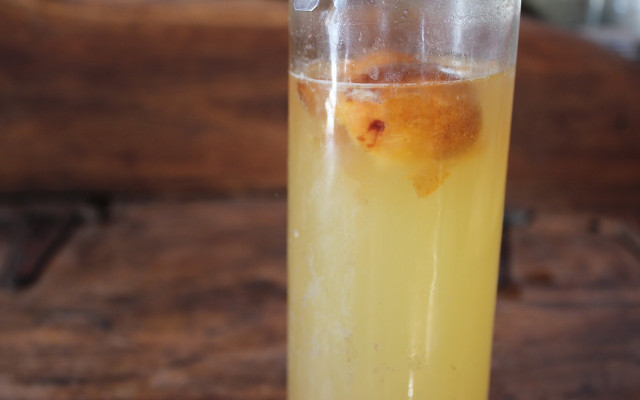We’ll show you how to make yeast step-by-step and what you need to pay attention to. Making yeast is the oldest method there is. Also, it’s ridiculously easy.
Whether it’s pizza dough, pastries, or a loaf of homemade bread: you can bake delicious things with dry or fresh yeast. Both kinds are industrially produced. Many people don’t know that there is a simple and easy alternative.
In this article, you will learn how to make and propagate yeast at home.
Is Yeast a Fungus?

Yeast is a type of fungus, certain strains of which decompose carbohydrates into carbon dioxide and alcohol. If you are a vegan, the thought that yeast is made of microorganisms might give you a pause. But the fungi do not have a central nervous system and can’t feel pain, so cruelty is not a factor when buying or eating products that contain them. For this reason, yeast is considered vegan.
There are many different strains of yeast. For culinary purposes, we humans tend to use the strain Saccharomyces cerevisiae, which is also known as baking or brewer’s yeast. In medicine, we often use the strain Saccharomyces boulardii.
In nature, yeast is found in many places, for example, on the surfaces of many types of fruit. To breed your yeast, you can take advantage of this fact.
How to Make Yeast in 3 Simple Steps



To breed yeast at home, you will need only these three ingredients:
- 2 cups (500ml) lukewarm water
- 2 dried organic prunes or dates to provide the yeast
- 1 tablespoon sugar, to give the yeast food
If you don’t have plums or dates, you can use other dried fruit – such as apricots. However, it is important that the fruit is organic and does not contain sulfites. The non-organic kinds are likely to have been exposed to fungicides, which defeats your purpose here.
Instructions:
In addition to the three basic ingredients, you also need a container holding two cups of water. It should have a lid and, ideally, be relatively narrow and tall so that the surface area of the water exposed to the air is reduced. This will lower the chances of unwanted bacteria growth.
Here’s what to do:
- Pour lukewarm water into the container.
- Add the sugar.
- Stir until the sugar is dissolved.
- Put the two prunes or dates in the water. Cover with a lid.
- Leave the vessel in a warm place, preferably between 75° and 95° Fahrenheit.
- Shake the yeast water once every morning and evening and open the jar’s lid to allow excess gases to escape.
- After about five to ten days, the yeast is ready for use. The exact duration depends on many factors, including the temperature. You can tell that your mix is ready by the typical smell. In addition, you should start to see small bubbles rising.
Has something gone wrong? Don’t be disturbed by the white streaks in the glass: these are caused by the softened dates. At the bottom of the jar, the light-colored yeast will settle. But if the water smells spoiled or has visible mold, pour it away and start again.
How to Use and Propagate Yeast



After about a week, the yeast should be ready. You can now use it, e.g., for baking. Keep the following points in mind:
- Replace the liquid in the recipe with the yeast water.
- Shake the water vigorously before adding it to the rest of the ingredients. This will cause the yeast to spread from the bottom into the liquid.
- Your dough may take longer to rise than usual. Just give it a bit of extra time.
When you have less than half a cup (about 150 to 200 milliliters) left in your container, it’s time to propagate your yeast again.
- Remove the dates from the jar.
- Add two fresh dates and a tablespoon of sugar.
- Fill the jar with lukewarm water and close it.
- Put the jar in a warm place. Shake and open it again twice a day.
- After about two to three days, the prepared mix is ready again. This time the process is faster because the yeast you started with is much more active.
If you do not want to propagate the yeast again immediately, you can also put the remaining 200 milliliters in the fridge. Due to the cold, the fungi are no longer active and can last for about one to two weeks.
Again, if the water smells spoiled or moldy, it is better to throw it away and start with fresh ingredients.
** Links to retailers marked with ** or underlined orange are partially partner links: If you buy here, you actively support Utopia.org, because we will receive a small part of the sales proceeds. More info.Do you like this post?






